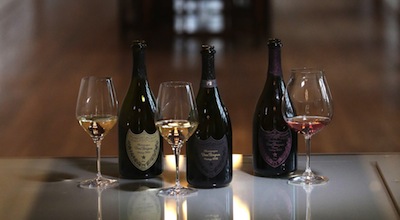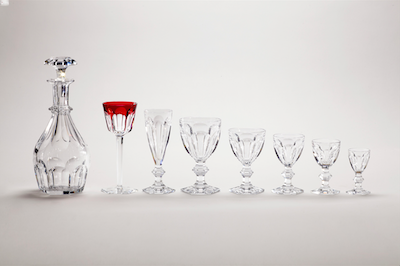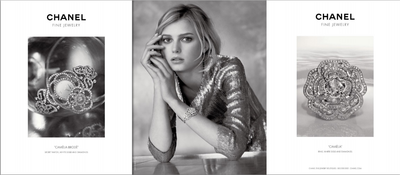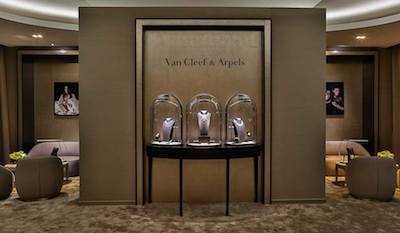NEW YORK – Understanding the relationship between heritage and innovation is the key to appealing to today’s new consumer, according to panelists at the FACC Luxury Symposium on March 31.
Heritage brands have been successful for decades or centuries because within the heritage is a history of innovation around a core group of principles. While touting history could suggest to younger consumers that a brand is “old and stodgy” or the brand of their grandparents, focusing on innovating with products that appeal to today’s consumers will let the puzzle pieces fall into place.
“If we are heritage and brands that means we have stood the test of time, and we have stood the test of time because we have a tradition of successfully innovating,” said Trent Fraser, vice president Dom Pérignon, LVMH Wines & Spirits.
“We don’t make things that are required to sustain life; we have to find ways to fulfill people’s dreams and make them fall in love, and this requires innovation,” he said.
“Innovative companies ought to aspire to be heritage brands, because heritage brands have a history of innovation.”
FACC Luxury Symposium was organized by the French-American Chamber of Commerce.
Past and present
Before the commencement of the “Strong Heritage Brands: Artisans, Ateliers & Métiers” panel, a poll of the luxury executives in the room revealed that 81 percent believe the millennial attitude toward heritage brands is considerably different than their predecessors.
“It’s not that surprising, but I think one of the most important things is desirability, not just in terms of millennials but for everyone,” Mr. Fraser said. “ One of my greatest challenges when I first joined was that there was this history and tradition of the brand’s story that needs to be told, but sometimes what comes with that is ‘old and stodgy, that’s my grandfather’s drink.’
“Telling that story today is quite difficult but we really need to bring it to life,” he said.
For Dom Pérignon, that story has been revitalized for younger consumers through the “Power of Creation” platform, which partners declared vintage wines with creators in different fields, bringing a fun, edgy and modern twist on the Dom Pérignon story.
For Baccarat, the sea change came on the level of how the product itself is marketed with “Everyday Baccarat,” which encourages consumers to extend their day by drinking from the brand’s crystal for breakfast and after dinner, not just for weddings and special occasions.
“I was walking home on my first day, and it occurred to me, ‘We all have designer shoes, we all have designer handbags that we use everyday, yet we’re afraid to chip our glass so we don’t use it,’” said Jim Shreve, president, USA at Baccarat. “But look at the bottom of my shoes. Look at my watch with all the scratches – and these cost much more than some of our products.”
Everyday Baccarat appeals to all consumers, but with millennials being particularly skeptical about buying a product they will use infrequently, the proposition of crystal for everyday use could sell them on the brand.
The focus on the product is particularly important in fashion and jewelry, where brands must not shy away from being different or departing the norms.
“Chanel as a heritage brand has been supported and carried by Mademoiselle Chanel through one word, for me, which is ‘disruptive,’” said Olivier Stip, senior vice president fine jewelry & watches, Chanel USA. “We are always trying to find what is the right balance between creation for the sake of the creation and the creation for a use for the customer.
“Heritage brands are the best place to be innovative,” he said. “When creative comes first and the marketing follows just to do the orchestration, that’s how you can create the blend, the innovation, and communicate the proper way.”
When telling a heritage story, brands must remember to keep the history on the present. The goal is not to sell consumers on a past success but rather on a tradition of quality still visible today.
For Van Cleef & Arpels, a museum exhibition must build a bridge between past and present.
“We go to a museum, we organize an exhibition, but the whole point is to prove craftsmanship is a living art and it doesn’t stay stuck in time,” said Alain Bernard, president and CEO of Van Cleef & Arpels Americas. “Many people, many brands organize exhibitions in museums where they show pieces without any connection to what’s happening now.
“We need that heritage – the branches of a tree are never longer than the roots, so you need to have strong, deep, long roots before branching out – but the whole point of the exhibition is to show the evolution,” he said. “What we do today, what we do everyday, is inspired by what we have done before, and the exhibition shows that.”
Even in the service industry, where the ability to sell a consumer on an experience rather than on a product they don’t strictly need seems different, the principle is the same. Across all sectors, brands must adapt, whatever their service is – whether it is providing a place to stay or providing clothing and jewelry of a high quality that will last a lifetime – to the contemporary mindset.
“At Ritz-Carlton we absolutely believe exceptional service is timeless, it never goes out of style,” said Tina Edmundson, global officer of luxury and lifestyle brands, Marriott International. “What that actually means continues to evolve.”

Ritz-Carlton Chicago Deca Restaurant
Rather than fear these changes, whether it is mindset about what qualifies as a desirable product, a different purchase journey or something else entirely, brands selling either goods or services must find the proper blend of change and heritage. To that effect, 71 percent of executives in the room believe that brands should communicate CSR guidelines in an explicit manner to connect with millennials.
Shifting emphasis
In the case of personal luxury goods, another balancing act is the one between online and in-store channels. More than half of polled executives say that with new business models and a new generation of luxury consumers, the retail store is more important than before.
Despite the continued importance of the bricks-and mortar store, they are still generally operating in an out-of-date fashion, creating obstacles for sales staff, according to the Luxury Institute.
The consultancy conducted a focus group with 40 store managers who oversee multi-brand, premium and luxury stores, and found that there are a number of improvements that companies could make to help their in-store staff be more productive and effective. From updating technology and CRM systems to reallocating employee resources, there is room for improvement that needs to begin at the top (see story).
By the same token, some brands should opt to play up heritage, especially as they make a move to enter the new market. In these situations, connotations of datedness or stodginess will be displaced by curiosity about national heritage.
British brands looking to gain a foothold in the United States would do well to emphasize their “Britishness,” according to panelists at “GREAT Britain on Madison Avenue” held on Nov. 5.
British identity is wrapped up into ideas of elegance, heritage and wit. Brands venturing out of the United Kingdom into the U.S. or other countries need to find ways to inform consumers not just of the brand but also of the significance of its home country (see story).
“The challenge for our brand is the challenge for any brand – to continue to evolve based on the environment,” said Alex Bolen, CEO of Oscar de la Renta. “We need to evolve around a core set of standards and principles that should remain unchanged, but how those are expressed will change as our environment changes.”
from Jewelry – Luxury Daily http://www.luxurydaily.com/heritage-brands-must-amplify-tradition-of-innovation-to-reach-todays-consumer/
via Your #1 Source to Finding Luxury & Designer Goods, Handbags & Clothes at or Below Wholesale: Click Here.





No comments:
Post a Comment